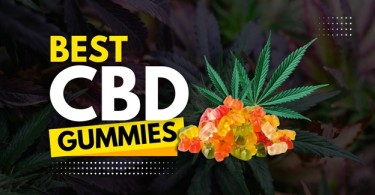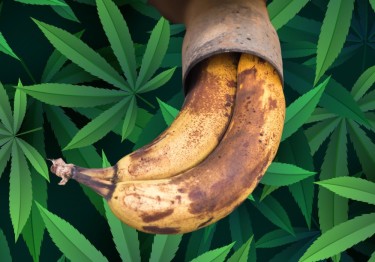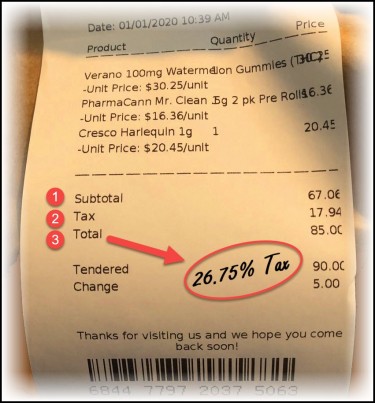Cannabis News
Tasty Cannabis Chocolates Ranked & Reviewed
Published
4 months agoon
By
admin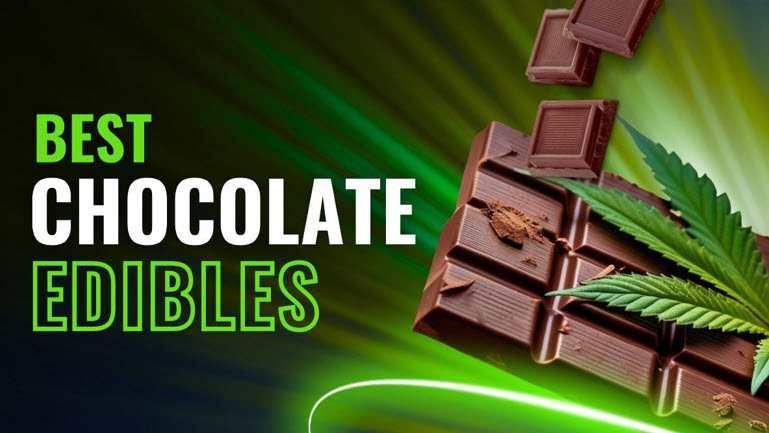

There are several different types of chocolate bars, some made with milk chocolate and others delighting your senses with premium dark chocolate.
And whoever decided to introduce cannabis chocolate did us a huge favor as chocolate mixed with cannabis is a perfect match, and the best chocolate bars with THC will most certainly delight your palate.
This article is fully devoted to exploring the world of cannabis chocolate, and in later sections, we discuss different types of cannabis chocolate edibles, how to find the best products on the market, and even how to make your own cannabis chocolates from the coziness of your home.
In essence, mixing cannabis with chocolate results in a delicious cannabis adventure, but there is much more we want to discuss, so let’s dive right into the topic.
>>Check the best prices for chocolate edibles here[1]
Where To Buy the Best Chocolate Edibles
This leads us to the best companies selling cannabis chocolate treats, and each company featured below most certainly deserves your attention.
1. Kats Naturals – Best Edibles Overall

Pros:
-
Subscribers qualify for huge discounts
-
Product Finder quiz to find the product for you
-
Range of manufacturing certifications
-
Great range of THC gummies and edibles
Cons:
The first brand for edibles we want to introduce you to is Kats Naturals.
In addition to a huge range of edibles, such as Hemp Dark Chocolate CBD, and Hemp White Chocolate CBD, the company also offers a range of other THC and CBD products.
If you subscribe to the company’s email newsletter, you get to benefit from a range of discounts, starting with your first order made here.
In addition, the renowned company offers free shipping on all orders exceeding $50, and shipping times range from three to a few more days, depending on your location in the USA.
>>Check the price for edibles at Kats Naturals[3]
2. Diamond CBD – Most Significant Discounts
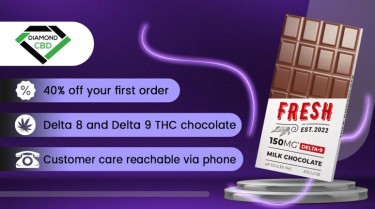
Pros:
-
40% discount on your first order
-
Featured in Leafy, CNN, Forbes, and Gotham
-
Customer care team reachable via phone
-
Delta 8 and Delta 9 THC chocolate
Cons:
Diamond CBD is another reputable company in the industry famed for its selection of Delta 8 and Delta 9 THC-infused cannabis chocolates.
The bestseller is the 6 Pack Bites with 150mg of Delta 8 THC, but we recommend you check other options from the section.
Many of the company’s bestsellers have been featured in Gotham, Forbes, CNN, and Leafy, which just adds to the company’s overall high reputation.
Shopping at Diamond CBD means benefiting from huge discounts, and if this is your first time shopping here, use the NEWC40 promo code to get a 40% discount on your first order, alongside free shipping and a gift of $20 in-store credits.
>>Check the price for edibles at Diamond CBD[4]
3. Edobles – Superior Customer Service

Pros:
-
Save 40% on your first order
-
Shop for products by effects
-
Three customer service contact options
-
30% discounts for subscribers
Cons:
Edobles is another company you want to check out if you are looking for top-grade cannabis-infused chocolates, and here, you can find the perfect chocolate treat for you based on the effects you are looking for, whether it be greater energy, mental boost, calmness, or euphoria.
With the NEWC40 coupon code, new shoppers at Edobles can instantly get their first order for a 40% reduced price, while the company offers free shipping on orders above $99.
Edobles is also known for offering superior customer service, and friendly and professional customer care agents are almost always at our disposal via three contact options: convenient Live Chat, phone, and email.
>>Check the price for edibles at Edobles[5]
4. Delta Extrax – Lightning-Fast Shipping

Pros:
-
Frequent weekly sales
-
Fast average shipping times
-
20% discount on your first order
-
Impressive Learn More Blog
Cons:
Next, we discuss Delta Extrax, and this company has spent quite a few years serving cannabis fans and enthusiasts residing in different parts of the USA-
The company’s top-grade quality THC gummies fall into the category of bestsellers, but there is a variety of chocolates with cannabis to explore as well, including the Delta 9 THC Chocolate Bars from the Extrax Chocolate Series.
What also makes Delta Extrax one of the best places to shop for edibles is the company’s fast shipping policy.
In addition, first-time buyers instantly qualify for a 20% discount on their first order, while frequent weekly sales mean you can get featured products for significantly discounted prices.
>>Check the price for edibles at Delta Extrax[6]
5. CBDMall – Great Banking System
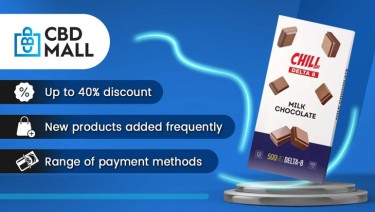
Pros:
-
NEWU40 promo code for a 40% discount
-
New products added frequently
-
Accepts a range of payment methods
-
Readily available third-party lab reports
Cons:
CBDMall, with its impressive selection of edibles, gummies, and other neatly crafted THC and CBD products, also deserves a sport here.
If you are interested in the bestsellers, make sure you check out Delta 8 THC Dark Chocolate Bar – 500mg – Chill Plus, which has an overall customer rating of 5.0, and all who tried it had only positive things to say.
Apart from offering a great range of gummies and edibles, the company also supports a variety of payment services, with e-wallets and credit/debit cards accepted.
If you decide to shop here, make sure you use the NEWU40 promo code to get your first order for a 40% discounted price.
>>Check the price for edibles at CBDMall[7]
What is a Chocolate Edible?
Cannabis chocolate is a popular way to consume cannabis because it blends the delicious aroma of chocolate with the medicinal properties of cannabis.
These are a particular kind of cannabis-infused product in which the psychoactive components of cannabis extract, namely THC and CBD, are mixed into chocolate to produce a tasty and convenient way to consume cannabis.
The process of creating cannabis chocolates demands close attention to precision.
The first step is decarboxylation, which releases the psychotropic chemicals found in cannabis plants, while some chocolates of this kind are infused with pure cold water hash for greater potency.
To help with the absorption of the cannabis extract, the cannabis is next ground into a fine powder and mixed with a high-fat ingredient like brown butter, cocoa butter or coconut oil.
After combining this cannabis-infused fat with chocolate and additional ingredients, it is poured into molds and left to harden.
The end product is a delicious cannabis chocolate that fulfills the sweet craving and has the desired cannabis effects. There are a number of reasons why chocolate bars infused with THC are so popular.
First of all, they provide a smokeless consumption option, which makes them a desirable choice for people who want to stay away from the possible health hazards connected with smoke through vaping.
Second, cannabis can be consumed more easily thanks to chocolate’s unique effect, especially for people who might not enjoy the hempy aroma of the cannabis plant.
Different Types of Chocolate Edibles
This leads us to different types of cannabis chocolate products, and besides being able to purchase delicious chocolate bars in milk or dark chocolate, there are other edibles with top-grade ingredients to try out.
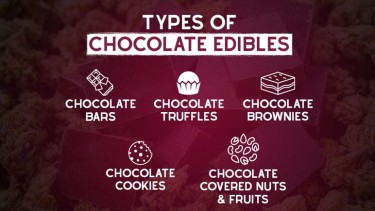
Chocolate Bars
A vital component of the family of cannabis treats is chocolate bars. Their adaptability and simplicity account for their widespread popularity.
Chocolate bars, which are made from a mixture of sugar, cocoa, and frequently a hint of vanilla, come in a variety of flavors, from rich, creamy milk chocolate to slightly bitter dark chocolate.
The best chocolate bars on the market are infused with sustainably sourced cacao
A variety of flavors can be added to chocolate bars, such as nuts, dried fruits, or even a hint of sea salt, blackberry, or dark cherry for a richer aroma.
Either way, there is a chocolate bar out there that is ideal for you, regardless of your preference for a tasty chocolate experience.
Chocolate Truffles
Besides chocolate bars, chocolate truffles with cannabis extract are the perfect treat if you are craving something stronger.
Owing to their resemblance in shape to the rare and costly truffle mushrooms, these milk or dark chocolate treats deliver on all fronts.
The core of them is a ganache, which is a rich and creamy combination of chocolate and cream that is frequently flavored with liquor, coffee, or caramel.
Each mouthful of a chocolate truffle, which is usually covered in a thin chocolate shell coated with cocoa powder, is a blast of rich aroma, making them an appealing treat for any fan of the tasty chocolate aroma.
Chocolate Brownies
Not to be overlooked is the basic chocolate brownie, which for many, is the ultimate comfort meal.
A chocolate lover’s paradise, these baked treats have a fudgy or cakey texture. Butter, sugar, flour, and chocolate come together to make a dense, creamy delight that is difficult to resist.
Chocolate brownies are proof of the comforting effects of chocolate, whether they are topped with caramel sauce, walnuts, or powdered sugar, and they also make a great choice.
Chocolate Cookies
These cookies have the ideal balance of crunchy, chewy, and tasty aromas, and they are far away from being ordinary cookies.
The buttery smoothness of the cookie is enhanced by the rich chocolate chips, making every bite a tasty surprise.
Chocolate cookies are an amazing delicacy that you may indulge in anytime, anywhere—whether you are craving them at midnight or as a midday snack, and those with a higher dose of THC are incredibly popular among seasoned THC consumers for obvious reasons.
Chocolate-Covered Nuts and Fruits
These treats offer a unique combination of textures and aromas that are sure to delight your palate with each serving.
Whether it is a festive celebration or a casual get-together, chocolate-covered nuts and fruits are a sophisticated treat that adds a touch of THC suitable for almost any occasion.
>>Check the best prices for chocolate edibles here[8]
Factors to Consider When Choosing the Best Chocolate Edibles
There are several factors to consider when looking for the best chocolates made with THC, and these are briefly discussed in the section that follows.
THC or CBD Content
The amount of THC or CBD in your dark or milk chocolate with a cannabis extract is one of the most important factors to consider.
This is an important consideration because it has a direct effect on the potency of the product.
Knowing the THC and CBD content level is essential in mushroom gummies or chocolate bars, whether you are looking for the relaxing effects of CBD or the intoxicating effects of THC.
It all comes down to preference and intended result, but knowing the potency of the product you are interested in is a must to ensure a safe experience.
Ingredients and Quality
Next, examine the treats’ quality and ingredients with great attention. The best chocolates with THC are composed of premium ingredients in addition to having a pleasant flavor.
Either way, you want to choose goods that are made with organic, natural components rather than ones that are infused with chemical preservatives and additives.
It is important to remember that the components in the chocolate bar or other products will eventually enter your body, so carefully consider your options.
Brand Reputation
You also want to take the reputation of the brand into account. Not all brands in the growing marijuana chocolate market are the same.
Transparency is key, and a respectable brand will give precise details about its products.
Additionally, they will have glowing customer reviews, which point to a track record of happy clients and high-quality products that deserve your attention.
They will also have a wide selection of products to choose from, all crafted following the strictest manufacturing protocols.
Dosage and Potency
The dosage and potency of the chocolate bar and other treats should be taken into account as well.
Every product has a certain quantity of either CBD, a non-psychoactive substance with medical benefits, or THC, the psychoactive ingredient in the marijuana plant.
It is important to recognize your level of experience and select a product with an appropriate dosage.
It is best for new users to begin with treats that have a low dosage and work their way up to a higher one as their tolerance grows.
Flavor Preferences
Like ordinary chocolates, edibles are available in a wide variety of tastes.
Everything from traditional dark chocolate to unique aromas like raspberry, mint, and chili is available to suit any taste.
Selecting a flavor you like is crucial because it can greatly improve your entire experience, and we recommend you start with standard options such as milk chocolate that most adore.
How to Make Your Own Chocolate Edibles at Home?
How your chocolates infused with THC prepared at home turn out mainly vary depending on several factors and to help you get the best product, we have included this short but handy guide on making cannabis treats at home.
Selecting Quality Chocolate
Selecting the appropriate chocolate is the first step in creating your own chocolate candies. The final flavor of your treats will be greatly influenced by the quality of the chocolate you use.
Seek premium chocolate with a high percentage of cacao. An excellent option is premium dark chocolate, which complements the earthy aroma of cannabis perfectly.
Decarboxylating Cannabis
An essential stage in producing cannabis for edibles is decarboxylation. To activate the THC, the component that gives cannabis its euphoric effects, this procedure includes heating the plant.
To do so, set the oven temperature to 240°F. Split the cannabis buds into tiny fragments. Evenly distribute the cannabis onto a sheet.
Bake, stirring occasionally to maintain equal cooking, for thirty to forty minutes. The cannabis undergoes decarboxylation after turning a medium brown color.
Infusing Cannabis into Chocolate
Now comes the exciting part – infusing the cannabis into the chocolate. To do so, in a double boiler over low heat, melt your chosen chocolate, stirring constantly to prevent burning.
Add your decarboxylated cannabis to the melted chocolate. To make sure the cannabis is mixed into the chocolate all the way through, give it a good stir.
Transfer the cannabis-infused chocolate to baking sheets coated with parchment paper or into molds. Before putting the chocolate in the refrigerator to solidify, let it cool at room temperature.
Recipe Ideas: Brownies, Truffles, etc.
A classic choice, chocolate brownies are easy to make and perfect for a beginner.
Simply replace the butter in your favorite brownie recipe with cannabis-infused butter, and voila, you have it, perfect chocolate brownie with a healthy dose of THC.
If you are feeling a bit more adventurous, why not try your hand at making chocolate truffles? Again, replace regular butter with cannabis-infused butter in your recipe, and you are all set.
If you are interested in learning more online, you will find a range of recipes, many of which are beginner-friendly.
Dosage and Safety Tips
It is important to remember that the effects of these products can take longer to become apparent compared to other forms of consumption. Start with a small amount, and wait at least an hour before consuming more.
Keeping your handmade foods out of the reach of kids and animals is also very important. To prevent any possible accidents, store them in a container that is both secure and well-labeled.
Making your own edibles at home can be a fun and rewarding experience. However, always remember to consume responsibly and be aware of your limits.
>>Check the best prices for chocolate edibles here[9]
Health Benefits of Consuming Chocolate Edibles
In the section that follows, we examine some of the potential health benefits associated with the consumption of edibles.
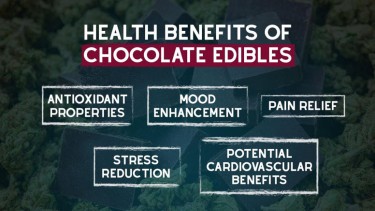
Antioxidant Properties
First of all, chocolate-flavored edibles are loaded with potent antioxidants [1].
These organic substances aid in the body’s fight against dangerous free radicals, shielding your cells from injury.
This implies that eating chocolate-flavored consumables can strengthen your body’s defenses and improve your general health.
Mood Enhancement
Tasty cannabis chocolates also have the power to improve your mood. They cause your body to produce more endorphins, which are naturally occurring “feel-good” hormones [2].
You experience a pleasant mood boost as a result, making you happy. Therefore, do not be afraid to treat yourself to a chocolate treat when you need a little pick-me-up.
Pain Relief
Edibles have mood-enhancing and antioxidant qualities, but they may also relieve pain [3].
They contain ingredients that help reduce inflammation and alleviate pain, making them a pleasant and natural approach to treating physical discomfort.
Chocolate edible may be the perfect tasty supplement for any ailment you may be experiencing, including headaches and muscle stiffness.
Stress Reduction
Research suggests that consuming chocolate can boost the creation of endorphins leading to significant stress reduction [4].
These endorphins have the ability to lower stress levels and increase feelings of peace and well-being.
Therefore, the next time you are experiencing some overwhelm, do not be afraid to grab the best mushroom for depression in the chocolate-flavored edible form to potentially relieve some of the stress bothering you.
Potential Cardiovascular Benefits
Additionally, edibles might improve cardiovascular health. Flavonoids can be found in abundance in some chocolate varieties, especially in dark chocolate [5].
The potential cardiovascular advantages of these antioxidants, which include lowered blood pressure and improved blood flow, are well recognized.
When consumed in moderation, edibles can make a tasty complement to a heart-healthy diet.
Are There Any Risks Associated with Consuming Chocolate Edibles?
First of all, the main risk is the challenge of controlling the dose. The psychoactive ingredient in cannabis, THC, is frequently present in varied concentrations in chocolate treats.
Due to the exquisite flavor of chocolate, one could be enticed to consume more than the advised quantity, leading to an overdose.
An overdose can cause hallucinations, anxiety, and paranoia.
Second, there is an additional risk due to the effects of delayed onset. The effects of edible cannabis take longer to manifest than those of smoking, taking anywhere from 30 minutes to 2 hours.
Due to the incorrect perception that the previous dose was insufficient, this delay frequently results in “stacking” or ingesting more edibles, which may provide an unintentional high.
Thirdly, there may be issues with edibles’ lingering effects. The duration of effects from edibles varies from one to twelve hours, depending on the THC content ingested.
This prolonged period may pose an issue for individuals who lack readiness or have responsibilities the next day. And last, there is the chance of eating tainted edibles.
Unless the delicacies are obtained from a reliable source, there is a chance that they may include toxic contaminants, such as pesticides, heavy metals, or other harmful things, and this is why it is important to buy from licensed dispensaries or reputable online shops.
>>Check the best prices for chocolate edibles here[10]
FAQs
For more information on edibles made with chocolate, make sure you check out our FAQs section.
What is the Difference Between THC and CBD in Chocolate Edibles?
THC is the compound that gives you a “high” or psychoactive effect.
On the other hand, CBD is non-psychoactive and is known for its potential therapeutic benefits, like reducing anxiety and inflammation, and the main difference lies in their effects.
How Long Do the Effects of Chocolate Edibles Last?
The effects of chocolate edibles might differ significantly based on a number of variables, such as your tolerance level, metabolism, and the product’s THC or CBD content.
After consumption, the effects often begin to take action 30 minutes to 2 hours later and continue for 4 to 12 hours.
How Should Chocolate Edibles Be Stored?
Edibles should be kept out of direct sunlight and in a cool, dark environment to preserve their potency and quality.
Generally, a cupboard or pantry is an excellent option. You can store them in the refrigerator if you wish to keep them for a longer amount of time.
However, to stop them from absorbing smells from other meals, make sure they are sealed tightly.
Can I Make Chocolate Edibles Without Cannabis?
Yes, you can make chocolate edibles without cannabis. These are just like regular chocolates and will not have any psychoactive or therapeutic effects associated with THC or CBD.
How Long Does Chocolate Edibles’ High Last?
THC-infused chocolate treats might give you a “high” that lasts for several hours. After consuming the product, you may typically feel the effects within 30 minutes to 2 hours, and they may last for 4 to 12 hours.
The potency of the edible, your metabolism, and your tolerance to THC can all affect how long the effects affect you.
Best Chocolate Edibles – Final Thoughts
The world of chocolate edibles is a paradise for curious THC consumers who are looking for a unique and different way to enjoy the potential benefits of THC.
From the tasty truffles to the crunchy cookies, there is a treat for every palate.
Remember, the key to enjoying these goodies is to start slow, and you also want to focus your attention on companies that are known for selling top-grade goodies, such as Kats Naturals[11] and other featured online retailers.
With the right amount of caution, you are most certainly set on the most chocolatey journey, so enjoy!
References:
- Hampson AJ, Grimaldi M, Lolic M, Wink D, Rosenthal R, Axelrod J. Neuroprotective antioxidants from marijuana. Ann N Y Acad Sci. 2000;899:274-82. PMID: 10863546.
- Grunberg, V. A., Cordova, K. A., Bidwell, L. C., & Ito, T. A. (2015). Can Marijuana Make It Better? Prospective Effects of Marijuana and Temperament on Risk for Anxiety and Depression. Psychology of Addictive Behaviors : Journal of the Society of Psychologists in Addictive Behaviors, 29(3), 590.
- Mack A, Joy J. Marijuana as Medicine? The Science Beyond the Controversy. Washington (DC): National Academies Press (US); 2000. 4, MARIJUANA AND PAIN.
- Allen, A. M. (2021). Impact of Acute and Chronic Cannabis Use on Stress Response Regulation: Challenging the Belief That Cannabis Is an Effective Method for Coping. Frontiers in Psychology, 12.
- Latif, Z., & Garg, N. (2020). The Impact of Marijuana on the Cardiovascular System: A Review of the Most Common Cardiovascular Events Associated with Marijuana Use. Journal of Clinical Medicine, 9(6).
MORE REVIEWS, CBD GUMMIES UP NEXT, READ ON…
You may like
-


The Grinch Stole SAFE Banking from the Cannabis Industry This Christmas, Yet Again!
-
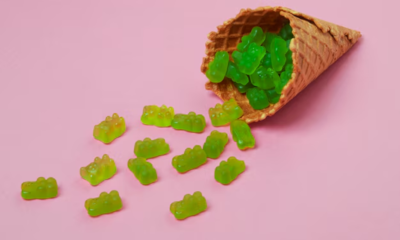

HHC vs. Delta 9: Differences & Similarities
-
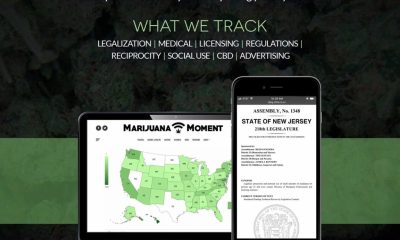

DOJ Asks Federal Court To Deny Doctors’ Lawsuit Over Marijuana Rescheduling Hearing To Avoid ‘Undue Delay’
-


What Federally Illegal Drug Has Created Almost $10 Billion in Sales Tax Revenue for States in the Last 40 Months?
-


Three Wise Men Give Marijuana Strain Gift Suggestions
-


Tasmanian Hemp Assoc Bids Goodbye To Australian Hemp Council
Cannabis News
The Grinch Stole SAFE Banking from the Cannabis Industry This Christmas, Yet Again!
Published
8 hours agoon
December 22, 2024By
admin

The landscape of cannabis legislation in the United States has been a complex and evolving issue, particularly concerning banking regulations. As of December 2024, it has become official: the current Congress will not provide any protections for banks that serve state-legal marijuana businesses. This decision has significant implications for the cannabis industry, which continues to grow rapidly despite the lack of federal support. In this article, we will explore the reasons behind this decision, the implications for cannabis businesses, and the broader context of cannabis legalization in America.
The State of Cannabis Legalization
A Growing Industry
The cannabis industry has seen remarkable growth over the past decade. As of late 2024, 23 states and Washington D.C. have legalized recreational marijuana use, while 38 states allow medical marijuana. According to recent estimates, the legal cannabis market in the U.S. is projected to reach over $40 billion by 2025. This growth has been fueled by changing public perceptions of marijuana, increased advocacy for legalization, and significant tax revenues generated by state-legal cannabis sales.
The Banking Dilemma
Despite this rapid expansion, cannabis businesses face unique challenges, primarily due to their inability to access traditional banking services. Federal law classifies marijuana as a Schedule I controlled substance under the Controlled Substances Act. This classification creates a significant barrier for banks and financial institutions that wish to work with cannabis businesses, as they risk federal penalties for facilitating transactions related to an illegal substance.
As a result, many cannabis companies operate on a cash-only basis. This situation not only poses safety risks—such as increased theft and violence—but also limits these businesses’ ability to manage finances effectively, pay taxes electronically, and build credit histories.
Legislative Attempts at Reform
One of the most prominent legislative efforts aimed at addressing these banking issues is the Secure and Fair Enforcement (SAFE) Banking Act. First introduced in 2019, the SAFE Banking Act sought to provide protections for banks that serve legal cannabis businesses by preventing federal regulators from penalizing them for doing so.
The act garnered significant bipartisan support in both the House and Senate. In previous sessions of Congress, it passed multiple times in the House but faced hurdles in the Senate due to opposition from certain lawmakers who were concerned about broader implications of marijuana legalization.
In light of ongoing discussions about federal spending and budgetary priorities, advocates had hoped that some version of the SAFE Banking Act would be included in recent spending bills. However, during negotiations leading up to December 2024, a House committee led by Republicans removed any provisions related to marijuana banking protections from key spending legislation.
This decision reflects a broader trend within Congress where discussions around cannabis reform have become increasingly contentious. While there is still bipartisan support for certain aspects of cannabis legislation—particularly when it comes to medical use—more comprehensive reforms like banking protections have struggled to gain traction.
Implications for Cannabis Businesses
Continued Cash-Only Operations
The removal of banking protections means that many cannabis businesses will continue to operate primarily on a cash basis. This situation presents several challenges:
-
Safety Risks: Cash-only operations make cannabis dispensaries and cultivation facilities prime targets for theft and robber Employees often have to handle large amounts of cash daily, increasing their risk of violence.
-
Operational Inefficiencies: Without access to banking services, businesses cannot easily manage payroll or pay bills electronically. This inefficiency can lead to operational delays and increased costs.
Impact on Public Safety
Advocates argue that providing banking access would enhance public safety by reducing the amount of cash circulating within the community. By allowing cannabis businesses to deposit their earnings into banks, it would minimize the risks associated with cash transactions, making both employees and customers safer.
Moreover, having a transparent financial system would help law enforcement track illicit activities more effectively. Currently, without proper banking oversight, there are concerns that some cash-only operations may be involved in money laundering or other illegal activities.
Politics and Public Opinion
Changing Attitudes Toward Cannabis
Public opinion on marijuana legalization has shifted dramatically over recent years. According to various polls, a significant majority of Americans now support legalizing marijuana for both medical and recreational use. This shift has put pressure on lawmakers to address outdated federal policies regarding cannabis.
Despite this growing acceptance among the public, political divisions remain strong within Congress regarding how best to approach cannabis reform. Some lawmakers advocate for full legalization at the federal level, while others prefer a more cautious approach that prioritizes regulation over outright legalization.
The Role of Advocacy Groups
Advocacy groups play a crucial role in pushing for legislative change regarding cannabis banking protections. Organizations such as the National Cannabis Industry Association (NCIA) and Americans for Safe Access (ASA) have been vocal proponents of reforming banking laws to support state-legal cannabis businesses.
These groups have mobilized public support through campaigns highlighting the safety risks associated with cash-only operations and advocating for policies that promote financial inclusion for cannabis entrepreneurs.
Future Prospects for Cannabis Banking Reform
While current congressional efforts have stalled regarding marijuana banking protections, there are still potential avenues for reform:
-
Incremental Reforms: Rather than pursuing comprehensive federal legislation like the SAFE Banking Act all at once, lawmakers may consider incremental reforms that address specific issues related to banking access without fully legalizing marijuana at the federal level.
The Role of Public Awareness
As public awareness about the challenges faced by cannabis businesses grows, there may be increased pressure on lawmakers to act decisively on this issue. Continued advocacy efforts can help ensure that banking reform remains a priority on Congress’s agenda.
Conclusion
The decision by Congress not to include marijuana banking protections in its current spending bill underscores ongoing tensions surrounding cannabis legislation in America. While public opinion increasingly favors legalization and reform, political divisions continue to hinder progress on critical issues such as banking access for state-legal marijuana businesses.
As the industry continues to grow despite these challenges, stakeholders must remain vigilant in advocating for change while exploring alternative solutions at both state and federal levels. The future of cannabis banking reform remains uncertain; however, with continued advocacy and public support, there is hope that meaningful progress can be made in addressing these pressing issues facing one of America’s fastest-growing industries.
SAFE BANKING SINCE 2018, WHAT A FAILURE, READ ON…
SAFER BANKING ACT FAILS AGAINS, SAME OF BANANA IN THE TAILPIPE!
Cannabis News
HHC vs. Delta 9: Differences & Similarities
Published
2 days agoon
December 20, 2024By
admin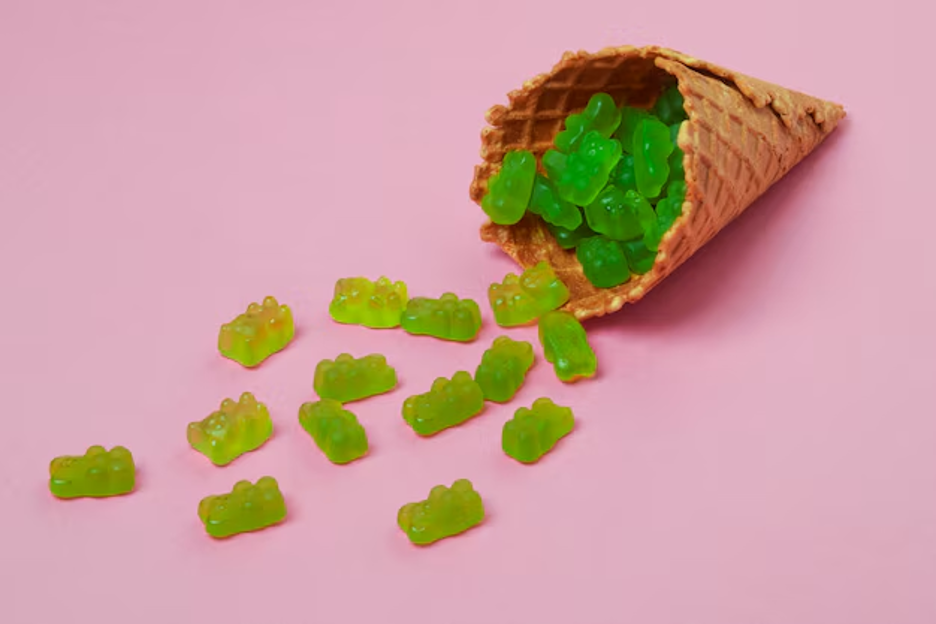

Cannabis has so many compounds, and two that have been making the rounds lately are HHC and Delta 9 THC. They’re not the same thing, even though they’re both cannabinoids that interact with the body’s endocannabinoid system. Some people want a mild, steady experience, while others might be looking for something more intense. Understanding these two can help you figure out what’s right for you.
What Is HHC?
HHC, short for hexahydrocannabinol, is a hydrogenated version of THC. It’s not something you’d find naturally in large amounts in cannabis plants. Instead, it’s made through a process that adds hydrogen molecules to THC. The result? A more stable compound that’s less prone to breaking down when exposed to heat or UV light.
How HHC Is Made
Think of it like a science experiment. HHC is usually created in a lab by taking Delta 9 or Delta 8 THC and using hydrogenation—basically, combining it with hydrogen under pressure and in the presence of a catalyst. This process changes its structure while keeping its effects somewhat similar to THC.
Common Uses and Effects of HHC
People who use HHC say it’s somewhere between Delta 8 and Delta 9 in terms of effects. It’s often described as relaxing but without being overly sedative. You might feel a light buzz, reduced stress, or mild euphoria. Some even claim it helps with discomfort or improving sleep, but solid research is still catching up. Since it’s less potent than Delta 9, it’s often favored by those who want a manageable experience without the strong psychoactive punch.
If you’re interested in trying HHC and Delta 9 for yourself, check out their wide range of products at trycandycloud.com. They’ve got everything from gummies to disposable vapes, all crafted for a smooth experience.
What Is Delta 9 THC?
Delta 9 THC is the main psychoactive compound in cannabis. It’s the reason you feel “high” when you use weed. Chemically speaking, Delta 9 has a double bond in its ninth carbon chain, which plays a big role in how it interacts with your brain.
Natural Occurrence in Cannabis
This one is straightforward: Delta 9 is found in high concentrations in marijuana plants. It’s what most people think of when they hear “THC.” Unlike HHC, there’s no need for a lab process—it’s already there. Hemp plants, however, contain much lower levels of Delta 9 THC, which is why it’s primarily extracted from marijuana.
Common Uses and Effects of Delta 9 THC
The effects of Delta 9 are well-documented. Depending on the dose, you might feel euphoria, increased appetite, or deep relaxation. For medical users, it’s often used to manage chronic pain, nausea, and other conditions. It’s also been studied for its potential benefits in anxiety relief, though higher doses might have the opposite effect, causing paranoia. Delta 9 THC is versatile, but it’s not without its risks, particularly for new users or those sensitive to its psychoactive effects.
Key Differences Between HHC and Delta 9 THC
Chemical Structure and Composition
The main difference is in their structure. Delta 9 THC has that iconic double bond, while HHC’s hydrogenation makes it more stable. This difference might not mean much to the average person, but it’s why HHC is less likely to degrade over time.
Potency Levels
Delta 9 THC is generally more potent. HHC might require a higher dose to get a comparable effect, but some people prefer its lighter touch. Potency differences can also depend on the method of consumption, with edibles typically providing a stronger, longer-lasting effect compared to vaping or smoking.
Duration of Effects
Both last a few hours, but some users report that HHC’s effects fade more gradually. Delta 9, on the other hand, can have a sharper comedown. HHC’s gradual fade makes it appealing for those who want a smooth end to their experience.
Benefits and Drawbacks of HHC and Delta 9 THC
HHC: Pros and Cons
Pros:
- More stable, so it lasts longer on the shelf.
- Effects are milder, making it less overwhelming for beginners.
- Can be a functional option for daytime use.
Cons:
- Limited research, so we don’t know its full impact yet.
- Availability can be hit or miss depending on where you live.
- Legal gray area in many regions.
Delta 9 THC: Pros and Cons
Pros:
- Well-studied with established medical uses.
- Widely available in areas where cannabis is legal.
- Stronger effects make it ideal for experienced users or those with high tolerance.
Cons:
- Higher chance of side effects like anxiety.
- More likely to show up on drug tests.
- Shorter shelf life compared to HHC.
Frequently Asked Questions (FAQ)
Q. Is HHC safer than Delta 9 THC?
Not enough research exists to say definitively, but HHC’s milder effects might make it feel safer to some users.
Q. Will HHC or Delta 9 THC show up on a drug test?
Yes, both can potentially show up on a drug test, so use with caution if that’s a concern.
Q. Which one is better for recreational use?
That depends on your preferences. HHC is great for a mellow time, while Delta 9 is better if you’re looking for something more intense.
HHC vs. Delta 9: Choosing the Right One for You
The choice comes down to what you’re after. If you want a milder, more laid-back experience, HHC might be a good option. On the other hand, if you’re looking for something stronger or need it for medical reasons, Delta 9 is the way to go. It also depends on what’s legal and available where you are. And always consider your tolerance levels and experience before diving in. If you’re unsure, consult with a knowledgeable dispensary staff.
Resources:
Cannabis News
What Federally Illegal Drug Has Created Almost $10 Billion in Sales Tax Revenue for States in the Last 40 Months?
Published
2 days agoon
December 20, 2024By
admin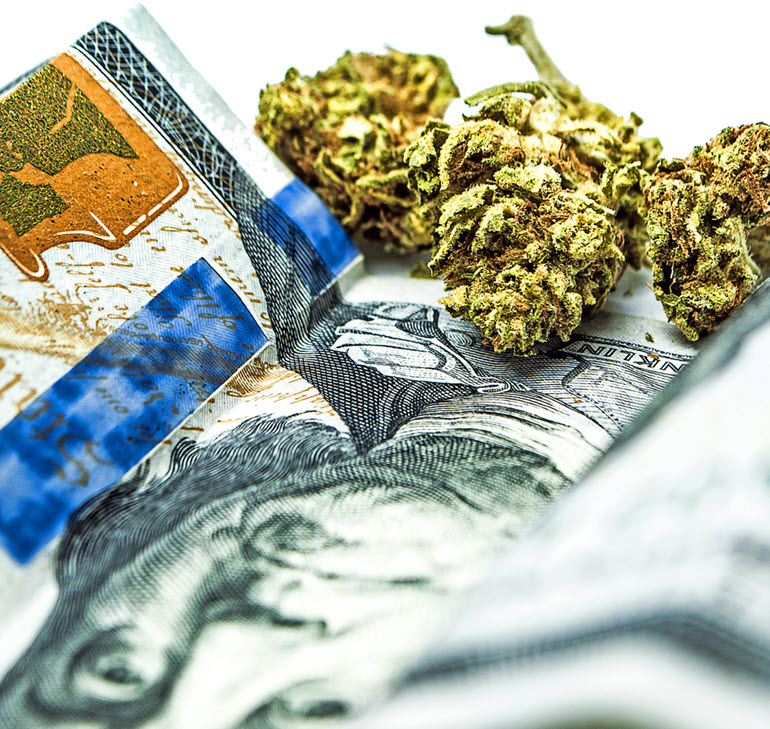
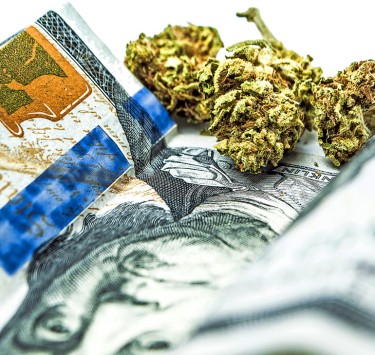
In a significant development for the burgeoning cannabis industry, the U.S. Census Bureau has reported that states across the nation have collectively amassed over **$9.7 billion** in tax revenue from marijuana sales since mid-2021. This figure underscores the economic impact of legalized cannabis and highlights the growing acceptance of marijuana as both a recreational and medicinal substance in various states. As more states move toward legalization, the financial implications both positive and negative are becoming increasingly evident.
The Landscape of Cannabis Legalization
The journey toward cannabis legalization in the United States has been long and complex. Initially criminalized in the early 20th century, cannabis began to regain acceptance in the late 20th century, particularly for medical use. The first state to legalize medical marijuana was California in 1996, setting a precedent that many states would follow.
By 2012, Colorado and Washington became the first states to legalize recreational cannabis, paving the way for a wave of legalization efforts across the country. As of now, more than 20 states have legalized recreational marijuana, while over 30 states allow medical use. This shift reflects changing public attitudes toward cannabis and recognition of its potential benefits.
Economic Implications of Legalization
The legalization of cannabis has not only transformed social norms but has also created a substantial economic impact. States that have embraced legalization have seen significant increases in tax revenue, job creation, and investment opportunities.
According to the latest Census Bureau report, states like California, Colorado, Illinois, and Michigan have emerged as leaders in cannabis tax revenue generation. These states have implemented various tax structures on marijuana sales, including excise taxes, sales taxes, and local taxes. The revenue generated is often earmarked for essential public services such as education, healthcare, infrastructure improvements, and drug rehabilitation programs.
Breakdown of Tax Revenue by State
As the largest legal cannabis market in the United States, California has been at the forefront of marijuana tax revenue generation. Since mid-2021, California has contributed approximately $2.5 billion to state coffers from cannabis taxes. This revenue is derived from both recreational and medical marijuana sales.
California’s tax structure includes a 15% excise tax on retail sales, along with local taxes that can vary significantly by city and county. The state has allocated a portion of these funds to various programs aimed at addressing issues related to drug abuse and public health.
Colorado was one of the pioneers in cannabis legalization and continues to serve as a model for other states. Since mid-2021, Colorado has generated around $1.8 billion in tax revenue from marijuana sales. The state imposes a 15% excise tax on wholesale marijuana transactions and a 2.9% sales tax on retail sales.
The revenue generated from cannabis taxes has been instrumental in funding education initiatives through the Public School Fund, as well as supporting mental health programs and substance abuse treatment services.
Illinois has seen remarkable growth in its cannabis market since legalizing recreational use in January 2020. In just two years, Illinois has collected approximately $1 billion in tax revenue from marijuana sales. The state imposes a tiered excise tax based on the potency of the product, ranging from 10% to 25%.
The funds collected are allocated to various initiatives, including community reinvestment programs aimed at addressing social equity issues related to past drug enforcement practices.
Michigan’s cannabis market has also flourished since legalization. Since mid-2021, Michigan has generated about $700 million in tax revenue from marijuana sales. The state’s tax structure includes a 10% excise tax on recreational marijuana and a 6% sales tax.
The revenue is utilized for various purposes, including education funding and support for local governments impacted by legalization.
Broader Economic Impact
The legalization of cannabis has led to significant job creation across various sectors. According to industry reports, the legal cannabis market supports hundreds of thousands of jobs nationwide—from cultivation and processing to retail and distribution. As more states legalize marijuana, this trend is expected to continue.
With the growth of the legal cannabis industry comes increased investment opportunities. Entrepreneurs are entering the market at an unprecedented rate, leading to innovations in product development, marketing strategies, and distribution channels. This influx of investment not only benefits individual businesses but also stimulates local economies.
Social Equity Considerations
While the financial benefits of cannabis legalization are clear, it is essential to address social equity issues that arise alongside this new industry. Many states have recognized that communities disproportionately affected by past drug enforcement policies should benefit from legalization efforts.
States like Illinois have implemented community reinvestment programs that allocate a portion of cannabis tax revenues to support communities impacted by previous drug laws. These funds can be used for education initiatives, job training programs, and mental health services—aiming to rectify historical injustices associated with cannabis prohibition.
In addition to financial support for communities affected by past policies, some states are also working to create equitable licensing opportunities for individuals from those communities. By prioritizing applications from minority-owned businesses or those directly impacted by previous drug laws, states can foster a more inclusive cannabis industry.
Challenges Ahead
Despite the significant progress made through legalization efforts, challenges remain on both state and federal levels.
Federal Legalization Uncertainty
One major hurdle is the ongoing conflict between state and federal laws regarding cannabis. While many states have legalized marijuana for recreational or medical use, it remains classified as a Schedule I substance under federal law. This discrepancy creates complications for businesses operating legally at the state level but facing potential federal prosecution.
Efforts toward federal legalization or decriminalization have gained traction recently; however, progress remains slow due to political divisions and differing opinions on drug policy reform.
Regulatory Hurdles
As more states enter the legal cannabis market, regulatory frameworks must evolve to ensure consumer safety while promoting fair competition among businesses. States face challenges related to product testing standards, labeling requirements, advertising restrictions, and taxation policies that can impact market dynamics.
Conclusion
The U.S. Census Bureau reports that states have collected over $9.7 billion in marijuana tax revenue since mid-2021, highlighting the significant economic impact of cannabis legalization. As public acceptance grows, more states are likely to pursue legalization. Despite ongoing challenges, including federal regulations and social equity issues, legalized cannabis is poised to remain a vital part of state economies. Collaboration among government officials, business leaders, and community advocates will be essential for fostering an equitable and sustainable cannabis industry. This evolving landscape not only presents economic growth opportunities but also addresses historical injustices tied to drug policy enforcement, shaping the future of cannabis legislation in the U.S.
WHAT STATES HAVE THE HIGHEST WEED TAXES? READ ON…

The Grinch Stole SAFE Banking from the Cannabis Industry This Christmas, Yet Again!

HHC vs. Delta 9: Differences & Similarities
DOJ Asks Federal Court To Deny Doctors’ Lawsuit Over Marijuana Rescheduling Hearing To Avoid ‘Undue Delay’

What Federally Illegal Drug Has Created Almost $10 Billion in Sales Tax Revenue for States in the Last 40 Months?

Three Wise Men Give Marijuana Strain Gift Suggestions

Tasmanian Hemp Assoc Bids Goodbye To Australian Hemp Council

Teen Marijuana Use Continues To Drop With Legalization

The Best Cocktails To Make You Feel Festive

Cannabis predictions for 2025: Low prices, high taxes, and hash

Oregon Cannabis: State of the State (2024)

Distressed Cannabis Business Takeaways – Canna Law Blog™

United States: Alex Malyshev And Melinda Fellner Discuss The Intersection Of Tax And Cannabis In New Video Series – Part VI: Licensing (Video)

What you Need to Know

Drug Testing for Marijuana – The Joint Blog

NCIA Write About Their Equity Scholarship Program

It has been a wild news week – here’s how CBD and weed can help you relax

Cannabis, alcohol firm SNDL loses CA$372.4 million in 2022

A new April 20 cannabis contest includes a $40,000 purse

Your Go-To Source for Cannabis Logos and Designs

UArizona launches online cannabis compliance online course
Trending
-

 Cannabis News2 years ago
Cannabis News2 years agoDistressed Cannabis Business Takeaways – Canna Law Blog™
-

 One-Hit Wonders2 years ago
One-Hit Wonders2 years agoUnited States: Alex Malyshev And Melinda Fellner Discuss The Intersection Of Tax And Cannabis In New Video Series – Part VI: Licensing (Video)
-

 Cannabis 1012 years ago
Cannabis 1012 years agoWhat you Need to Know
-

 drug testing1 year ago
drug testing1 year agoDrug Testing for Marijuana – The Joint Blog
-

 Education2 years ago
Education2 years agoNCIA Write About Their Equity Scholarship Program
-

 Cannabis2 years ago
Cannabis2 years agoIt has been a wild news week – here’s how CBD and weed can help you relax
-

 Marijuana Business Daily2 years ago
Marijuana Business Daily2 years agoCannabis, alcohol firm SNDL loses CA$372.4 million in 2022
-

 California2 years ago
California2 years agoA new April 20 cannabis contest includes a $40,000 purse



